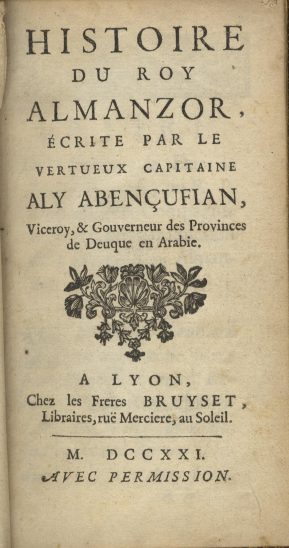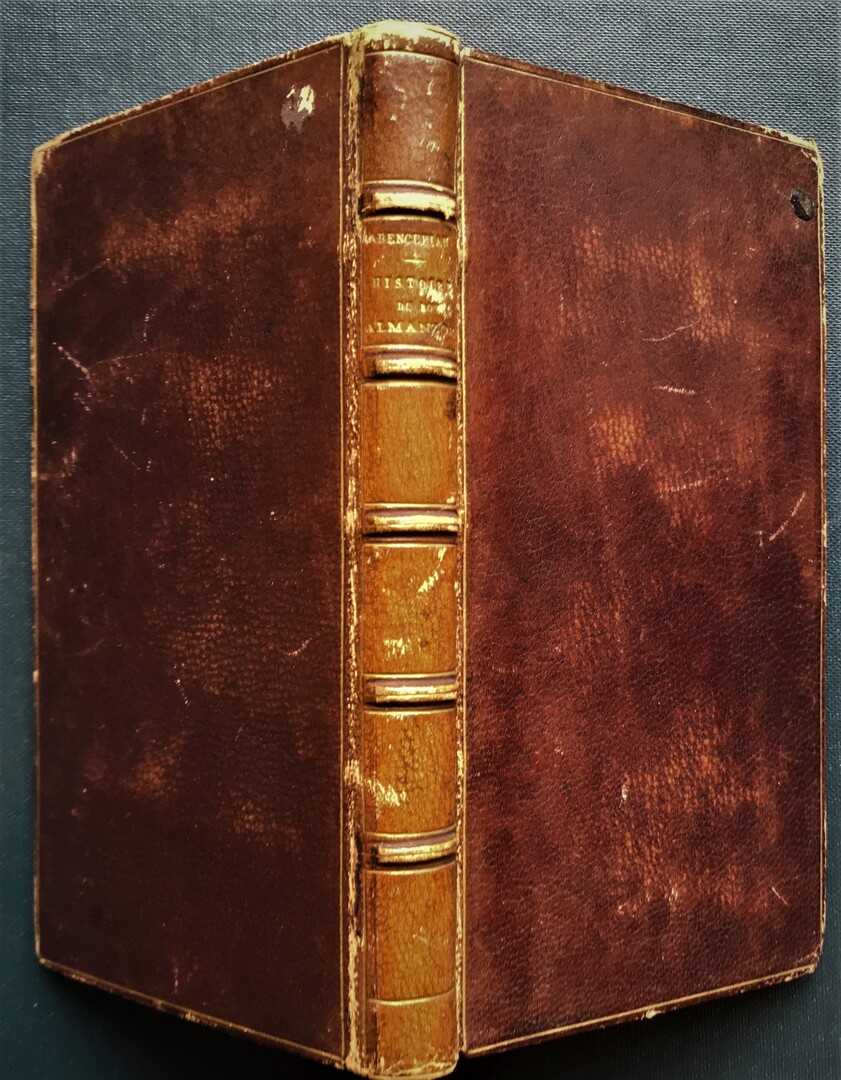Histoire du Roy Almanzor, écrite par le Vertueux Capitaine Aly Abençufian, Viceroy, & Gouverneur des Provinces de Deuque en Arabie.
Abencufian, Aly / Miguel de Luna.
Synopsis
The first edition was published in Granada in 1600. The text of this fictitious account of the Arab conquest of Spain, described by its ingenious Moor author, Miguel de Luna, as a Spanish version of a text by one of the invading forces, “ Abulcasim Tarif Abentarique” of Medina. The book is in two parts, part 2 beginning with a life of King “Jacob Almancor” by a certain Ali Abencufian.
The most celebrated Moorish convert to Christianity of his time, Miguel de Luna became an interpreter to the crown. In this capacity, and as a native of Granada, he had access to Arabic manuscripts still extant there, as well as the wealth of legendary material found in Spanish balladry and half-forgotten Moor traditions. His work quickly became popular and caused a renewal of interest in the historical period throughout Europe. Nevertheless, his so-called History is fiction.
Though a product of de Luna’s imagination, modern scholars like Monroe, unlike many 19th century ones, do not relegate his work to the realms of a mere novel: ‘..de Luna’s book is something more than just a blatant attempt to foist a falsified Arab history on the public; it is a defence of tolerance, and as such it belongs in the class of novels of the sort of the Abencerraje, which also attempts to show how on the level of virtue and tolerance, both Muslims and Christians could coexist in perfect harmony. It is thus tempting to speculate on the extent to which polemical Moor literature may have helped shape the image of the ‘Noble Moor’ which became so fashionable in Golden Age Spanish literature and lasted till much later as a literary theme in the rest of Europe’.
Only in recent times has it been appreciated that de Luna’s primary objective was to offer a disguised criticism of the treatment of the Moors. That his intentional fabrication escaped detection for two centuries is an indictment of earlier Spanish scholarship.
Bibliographic references: Palau 144 078; cf. Ticknor I p. 215; Monroe p. 7-11.








